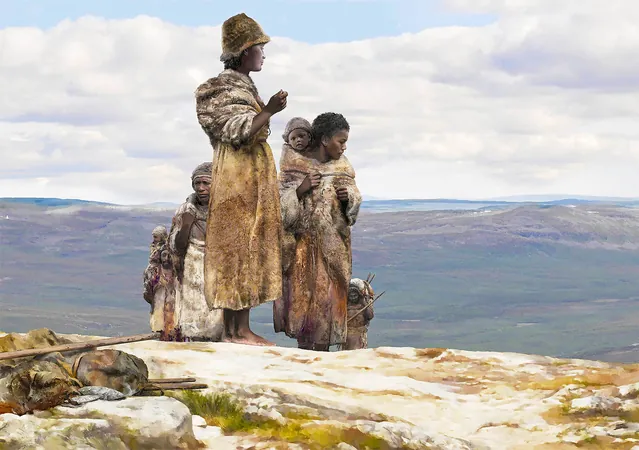
The Fascinating Discovery of the World's Oldest Human DNA: A Link to Neanderthals
2025-06-12
Author: Ming
A Glimpse into Ice Age Europe
About 45,000 years ago, Ice Age Europe witnessed a remarkable event: a wave of modern humans arrived from the southeast to encounter a continent already populated by Neanderthals. These early modern humans resembled us closely yet shared their chilly habitat with another human species, leading to a genetic exchange that still resonates in our DNA today.
Unearthing Ancient Bones in Germany
In a German cave known as Ranis, scientists uncovered an array of tiny, delicate bones dating back 42,000 to 49,000 years. This fascinating find included remains from at least six individuals—males, females, and even infants—among which were a mother and her daughter.
A Surprising Genetic Connection
Across the Czech border, researchers discovered a skull belonging to a woman from a similar time period. Initially, the relationship between the two sites was shrouded in mystery. However, DNA analysis revealed that this female and two individuals from Ranis were actually fifth or sixth cousins, suggesting they were part of a broader, interconnected community of early Europeans.
Revealing Advanced Toolmaking Skills
The Ranis site is renowned for its distinct stone tools, known as LRJ tools (Lincombian-Ranisian-Jerzmanowician). For years, archaeologists questioned whether these tools were crafted by Neanderthals or modern humans. The latest findings confirm that it was early modern humans who shaped these sophisticated implements.
Unlocking High-Quality Ancient Genomes
The Max Planck Institute for Evolutionary Anthropology has sequenced some of the oldest, high-quality modern human genomes, notably from an exceptional specimen named Ranis13. This genome was preserved so well that researchers could reconstruct it in fine detail, revealing a mysterious twist: these early Europeans, including Ranis13 and the woman from Zlatý kůň, seem to have no direct descendants alive today.
The Enigmatic Encounter with Neanderthals
These individuals exhibited no signs of recent Neanderthal ancestry, suggesting they entered Europe in an altogether different manner or simply didn’t have much direct contact with Neanderthals during their time.
The Fragile Existence of Early Populations
Genomic data indicates that this group may have consisted of only a few hundred people scattered over a wide region, highlighting the precariousness of life in Ice Age Europe amidst harsh conditions and competition from long-established Neanderthal communities.
What Did They Look Like?
Research into genes linked to physical traits indicates these ancient humans likely had dark skin, dark hair, and brown eyes, characteristic of individuals with recent African ancestry. They represented some of the first modern humans to venture into Europe’s icy wilderness.





 Brasil (PT)
Brasil (PT)
 Canada (EN)
Canada (EN)
 Chile (ES)
Chile (ES)
 Česko (CS)
Česko (CS)
 대한민국 (KO)
대한민국 (KO)
 España (ES)
España (ES)
 France (FR)
France (FR)
 Hong Kong (EN)
Hong Kong (EN)
 Italia (IT)
Italia (IT)
 日本 (JA)
日本 (JA)
 Magyarország (HU)
Magyarország (HU)
 Norge (NO)
Norge (NO)
 Polska (PL)
Polska (PL)
 Schweiz (DE)
Schweiz (DE)
 Singapore (EN)
Singapore (EN)
 Sverige (SV)
Sverige (SV)
 Suomi (FI)
Suomi (FI)
 Türkiye (TR)
Türkiye (TR)
 الإمارات العربية المتحدة (AR)
الإمارات العربية المتحدة (AR)